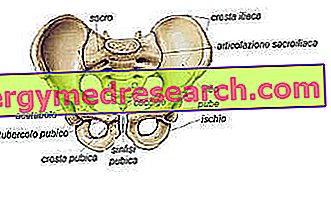There are many women who practice physical activity and wish to continue doing so even during pregnancy.
It is obvious, however, that the modifications of the organism will impose changes in the type, duration and intensity of the exercise compared to the pre-season levels.
The goal will be to maintain the highest state of well-being in maximum safety for the expectant mother and the fetus.
To this pro, whatever the type of activity carried out, it is necessary to follow these simple rules:
- maternal heart rate should not exceed 140 bpm;
- physical activity, if intense, should not exceed 15 minutes in duration;
- after the fourth month of pregnancy, exercises on the floor in the supine position must not be performed;
- do not exceed 38 ° C body temperature;
- adjust the caloric intake in relation to the activity performed.
But what really happens in pregnancy ?!
As the pregnancy progresses, the volumetric increase in uterus and breast causes a change in the center of gravity of the pregnant woman: typical lumbar pain which is frequently associated with a laxity of the sacroiliac joint, which classically leads to an imbalance anterior body weight.
In fact, under the hormonal influence (estrogens, progesterone) the connective tissue becomes more elastic and more easily spreadable. This situation will result in greater laxity of the tissue itself and of the joints which, therefore, during pregnancy will be more exposed to the risk of trauma.
For this reason, low impact exercises such as walking, swimming or taking part in gentle and postural gymnastics are often recommended.
 Fig 1. representation of the basin | Attention : the hormonal changes that during the training create some problem on the choice of the exercises, in reality predispose the structure of the pelvis, in particular the symphysis pubis and the sacro-iliac, to the birth of the fetus. |
Also the respiratory system, in gestation, undergoes changes.
With the increase in the size of the fetus, in fact, the diaphragm undergoes an upward push with consequent mechanical decrease in the pulmonary reserve and difficulty in effectively compensating for the stress of anaerobic exercises.
These observations lead us to think that in pregnancy we are not able to maintain high levels of aerobic activity.
It is therefore essential to control the heart rate by keeping it 25-30% lower than the optimal values of aerobic fitness. Because, even if in rare cases, the greater muscular spraying caused by the exercise could cause a decrease in uterus-placenta spraying with negative consequences for the fetus.
| Contraindications to the performance physical activity in pregnancy: | Symptoms indicating the necessary interruption of the exercise: | |
|
|
Furthermore, in each training session, it is recommended to perform specific exercises to reinforce the pelvic floor (sphincter muscles) and work, with good intensity, on the muscles of the "abdominal press" (abdominals, buttocks, diaphragm etc.). This will guarantee strength and elasticity to the fabric at the time of delivery and more vigorous "thrusts".
Example :
| 15 flash contractions: pelvic floor | Recovery: 30 " |
| 20 flash contractions: buttock | recovery: 30 " |
| 15 facilitated crunches | recovery: 1 ' |
Repeat the circuit 2/3 times
Positive aspects of exercise during pregnancy
Exercise during pregnancy, if practiced consistently, has a beneficial effect in reducing pain perception and stress during labor with an increase in plasma beta-endorphin rates.
So do not abandon your sneakers. The activity is good for you and your child and now good training.



